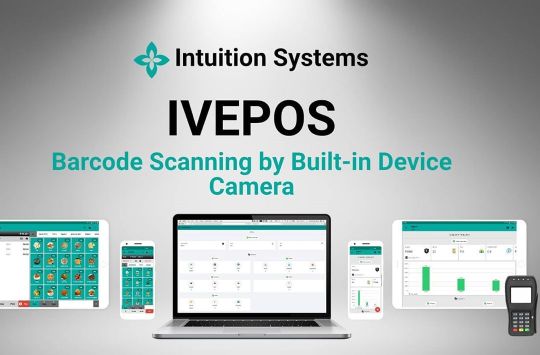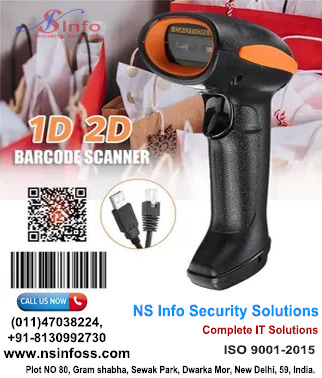#BarCodeScanning
Explore tagged Tumblr posts
Text
Barcode Definitions: Clear Explanations and Uses | Info in 2025

Barcodes are no longer just lines on a label. In 2025, they represent a smarter way of tracking, managing, and organizing data across industries. Barcode Definitions have evolved with technology to include both traditional linear codes and modern 2D formats like QR codes and Data Matrix. Understanding these updated Barcode Definitions helps businesses adapt, innovate, and improve day-to-day operations with ease.
What Is a Barcode? Understanding the Basics
A barcode is a visual pattern that stores data in a machine-readable form. It allows information to be quickly scanned and processed using barcode readers or smartphones. At the core of Barcode Definitions lies this concept of simplifying data input and retrieval. Whether it’s a UPC code on a product or a QR code on a billboard, each barcode tells a story the system can understand instantly.
Types of Barcodes Used in 2025
Barcode Definitions now include a wide variety of code types. One-dimensional (1D) barcodes like Code 128, EAN, and UPC are common in retail and logistics. Two-dimensional (2D) codes like QR codes, PDF417, and Data Matrix can store more complex data such as URLs, documents, or user credentials. Each of these barcode types serves a specific purpose and offers unique advantages in readability, capacity, and space usage.
How Barcode Technology Works
When a barcode is scanned, the pattern of lines or squares is interpreted into data by a barcode reader. This process includes detecting the barcode, decoding it, and sending the information to a connected system. Barcode Definitions involve not just the printed symbol but the entire workflow — from printing to scanning to data integration. This seamless communication saves time, reduces errors, and improves productivity.
Key Applications of Barcodes Across Industries
From retail checkouts to hospital equipment tracking, Barcode Definitions apply to countless real-world uses. In warehouses, barcodes help manage inventory. In transport, they assist in package tracking. In healthcare, barcodes on patient wristbands ensure proper medication administration. Each industry relies on the clarity and precision of Barcode Definitions to operate safely and efficiently.
Benefits of Using Barcode Technology in Modern Businesses
Barcode systems offer more than just convenience. They bring structure, reduce manual effort, and support real-time monitoring. Barcode Definitions help businesses minimize errors, improve speed, and track assets or goods with greater accuracy. As a result, businesses save money, improve workflow efficiency, and gain visibility over their operations.
Barcode vs QR Code: What’s the Difference in 2025?
While both are part of Barcode Definitions, traditional barcodes and QR codes are used in different ways. A linear barcode stores less information but is great for product labels and shelf tags. A QR code holds much more data and is better suited for mobile apps, payments, and online interactions. The choice depends on what type of data you want to store and where it will be used.
Emerging Trends in Barcode Systems
Barcode Definitions are expanding to include newer technologies like mobile barcode scanning, digital barcodes, and AI-based analytics. Businesses are now using barcodes for contactless transactions, warehouse automation, and even customer engagement. Smart labels that update in real-time and IoT-integrated scanning systems are also on the rise, making barcodes more powerful and adaptable than ever before.
AIDC Technologies India’s Expertise in Barcode Solutions
AIDC Technologies India has been a trusted provider of barcode solutions across sectors like retail, logistics, manufacturing, and healthcare. With years of experience in customizing Barcode Definitions to client needs, AIDC offers hardware, software, and consulting services that are reliable and future-ready. Whether you need basic barcode printing or full system integration, AIDC ensures you have the right tools for success.
How to Choose the Right Barcode System for Your Needs
Not all barcodes are created equal. Your business needs determine which format, scanner, or software is ideal. Barcode Definitions help guide the selection process. For example, if you're in retail, you may need high-speed scanners and thermal printers. For warehouse environments, durability and scanning range become important. AIDC Technologies India offers expert consultation to help you make the best choice.
Barcode Integration with Business Software
A modern barcode system should not function in isolation. It must work smoothly with your inventory software, ERP, or point-of-sale system. Barcode Definitions today include how barcodes interact with these platforms. Integration allows for real-time inventory updates, automated billing, and enhanced reporting. AIDC India helps clients connect barcode hardware with the software they already use.
Inventory Management with Barcode Systems
Managing stock is simpler and more accurate with barcodes. Barcode Definitions in inventory involve assigning codes to every product or asset, making it easy to track movement, count stock, and prevent loss. Automated systems reduce human error and enable businesses to make data-driven decisions. AIDC Technologies India specializes in building smart inventory solutions powered by barcode technology.
Ensuring Barcode Standards and Compliance
Using barcodes means following global standards such as GS1 or ISO/IEC to ensure compatibility and readability. Barcode Definitions must comply with these rules, especially in industries like pharmaceuticals and food where traceability is critical. AIDC India helps businesses create and maintain barcodes that meet regulatory and operational standards.
Custom Barcode Labeling Services by AIDC India
Every industry has unique labeling needs. That’s why AIDC India offers custom barcode label printing services. Whether it’s waterproof labels, tamper-evident tags, or labels for high-temperature environments, AIDC creates labels that align with the right Barcode Definitions and business requirements. These labels ensure accuracy and durability in even the toughest conditions.
Why AIDC India Leads in Barcode Innovation in 2025
AIDC Technologies India continues to lead in offering high-performance barcode solutions that grow with your business. With a strong focus on innovation, support, and integration, AIDC tailors each solution based on updated Barcode Definitions. Their barcode systems empower businesses to operate with speed, control, and confidence in 2025 and beyond.
Call to Action Looking to upgrade your barcode systems for 2025? Partner with AIDC Technologies India for reliable, scalable, and industry-specific barcode solutions.
#BarcodeDefinitions2025#BarcodeTechnology#SmartBarcodeUses#BarcodeInBusiness#AIDCBarcodeSolutions#BarcodeTracking#BarcodeScanning#InventoryManagement2025#RetailTechTrends#BarcodeAutomation
0 notes
Text
0 notes
Text

Running a business just got smarter:
Assign unique barcodes to every product for easy tracking.
Scan new stock to update your inventory in real-time.
Simplify customer checkouts with seamless barcode scanning.
Get a 360° view of your inventory anytime, anywhere!
🌟 Say goodbye to manual errors and hello to efficiency. Embrace the future of inventory management!
#BarcodeScanning#InventoryManagement#BusinessAutomation#SmartTech#EfficiencyMatters#TechForBusiness#RealTimeUpdates
0 notes
Text
Streamlining Operations: Inventory Management Best Practices for WISPs and ISPs

Introduction
In the ever-evolving landscape of Wireless Internet Service Providers (WISPs) and Internet Service Providers (ISPs), effective inventory management is a crucial component for operational efficiency and customer satisfaction. This blog post explores key aspects of inventory management, including the use of bar code scanning, equipment assignment and tracking, and the integration of inventory management software.
1. Bar Code Scanning:
Bar code scanning has become a game-changer in inventory management for WISPs and ISPs. Implementing a bar code system allows for quick and accurate tracking of equipment, reducing the likelihood of errors and streamlining the entire inventory process.
Advantages of Bar Code Scanning:
Accuracy: Bar code scanning minimizes manual data entry errors, ensuring that the information in the inventory database is reliable and up-to-date.
Speed: The speed of bar code scanning significantly reduces the time required for tasks such as equipment check-in, check-out, and stocktaking.
Real-time Updates: Scanning enables real-time updates to the inventory system, providing instant visibility into the status and location of each item.
Example Use Case: Consider a scenario where a WISP is deploying new equipment to enhance coverage in a specific area. Bar code scanning can be used during the equipment deployment process to efficiently log each item into the inventory system, associating it with the corresponding location.
2. Equipment Assignment and Tracking:
Efficiently assigning and tracking equipment is paramount for WISPs and ISPs managing a diverse range of hardware components. This includes antennas, routers, cables, and other devices critical to network infrastructure.
Best Practices for Equipment Assignment and Tracking:
Unique Identifiers: Each piece of equipment should have a unique identifier, whether it’s a serial number or a bar code, to facilitate accurate tracking.
Assignment History: Maintain a comprehensive history of equipment assignments, including dates, locations, and responsible personnel.
Condition Monitoring: Regularly assess the condition of equipment to identify any potential issues or the need for maintenance or replacement.
Example Use Case: When a WISP technician is assigned to install new customer premises equipment (CPE), the inventory management system can be used to track the specific CPE assigned to the technician, its location during installation, and any relevant details about the deployment.
3. Inventory Management Software:
Leveraging dedicated inventory management software enhances the overall efficiency and effectiveness of inventory control processes for WISPs and ISPs.
Key Features of Inventory Management Software:
Centralized Database: Maintain a centralized and up-to-date database of all inventory items, accessible to authorized personnel.
Automation: Automate routine tasks such as stock replenishment, order management, and equipment audits to save time and reduce human error.
Reporting and Analytics: Generate reports and analytics to gain insights into inventory trends, usage patterns, and potential areas for optimization.
Example Use Case: An ISP can use inventory management software to generate reports on equipment usage patterns, helping them make informed decisions about inventory levels and future equipment purchases.
4. Integration with Network Monitoring Systems:
Integrating inventory management with network monitoring systems adds another layer of intelligence to WISPs and ISPs operations. This integration allows for a holistic view of both inventory and network performance, enabling proactive maintenance and minimizing downtime.
Benefits of Integration:
Proactive Issue Resolution: By correlating inventory data with network performance, providers can identify potential issues before they escalate. For example, if a certain router model is prone to failures, the inventory system can flag devices of that model for closer monitoring.
Optimized Resource Allocation: With insights from network monitoring, WISPs and ISPs can strategically allocate resources, ensuring that critical equipment is readily available where and when it’s needed most.
Example Use Case: An ISP notices a sudden increase in latency for a specific group of users. By cross-referencing the affected area with the inventory system, they identify a faulty switch. The integration triggers an automated alert, prompting technicians to address the issue promptly, thereby minimizing the impact on users.
5. Lifecycle Management:
Efficient inventory management goes beyond tracking current assets; it involves managing the entire lifecycle of equipment. This includes procurement, deployment, maintenance, upgrades, and eventual decommissioning.
Key Aspects of Lifecycle Management:
Procurement Planning: Inventory management systems can aid in procurement planning by providing insights into historical usage patterns, allowing WISPs and ISPs to make informed decisions about when and what to purchase.
End-of-Life Planning: By tracking the age and condition of equipment, providers can plan for end-of-life scenarios, ensuring timely replacements or upgrades to maintain a robust and future-proof infrastructure.
Example Use Case: A WISP is planning to upgrade its wireless access points. The inventory system, coupled with lifecycle management, helps in identifying outdated models. This data informs the procurement team about the quantity and specifications needed for the upcoming upgrade, streamlining the entire process.
6. Security and Compliance:
In the context of WISPs and ISPs, ensuring the security of network equipment is paramount. Inventory management plays a crucial role in maintaining a secure and compliant network infrastructure.
Security and Compliance Measures:
Access Controls: Implement strict access controls to the inventory management system, ensuring that only authorized personnel can view or modify sensitive information.
Audit Trails: Maintain detailed audit trails to track changes to the inventory database. This not only aids in accountability but also supports compliance with regulatory requirements.
Example Use Case: In the event of a security breach, having robust access controls and audit trails in the inventory management system allows WISPs and ISPs to quickly identify unauthorized changes or access, aiding in forensic analysis and strengthening overall security measures.
Conclusion
In conclusion, the evolution of WISPs and ISPs is intricately tied to their ability to manage and leverage their inventory effectively. From the adoption of bar code scanning and equipment assignment/tracking to the integration with network monitoring systems and robust lifecycle management, each facet contributes to the overall success of these providers. By embracing these advanced inventory management practices, WISPs and ISPs position themselves not only for operational excellence but also for meeting the growing demands of an increasingly connected world. As technology continues to advance, the role of inventory management will remain pivotal in shaping the future of telecommunications.
#WISPManagement#ISPInventory#BarCodeScanning#NetworkIntegration#LifecycleManagement#fixedwireless#wisps#rural broadband#connectivitysolutions#broadband
0 notes
Text
Document Management System
Document management system with multi-level security framework which lets you control user access upto document level. It focuses on the entire lifecycle of a document from Scanning to Storing to Sharing- its like your organisation’s digital file cabinet!
bridgesol.com/document-management-system/

#documentmanagementsystem#documentmanagementsoftware#documentmanagementsolution#Enterprisecontentmanagementsolution#Enterprisecontentmanagementsoftware#Documentmanagement#documentscanning#barcodescanning#controllingdocumentaccess
1 note
·
View note
Text
Barcode Scanning Odoo Inventory: Master the setup and use of barcode scanning to manage product packaging and inventory in Odoo. This clear tutorial explains configuration, scanning, and order processing. #OdooInventory #BarcodeScanning #ProductPackaging
0 notes
Text
#fixedassets#assettagging#assettaggingformat#physicalasset#mobileapps#manageandtrack#assetswithbarcodes#barcodelabels#barcodescanner#assetdata#barcodesystem#qrcodes#mobiledevice#barcodescanning#barcodeassettrackingsoftware#manageassets#manualdataentry#inventorymanagement#realtime#assettrackingsystem#assetmanagementsystem
0 notes
Photo

Barcodes are a valuable tool for #inventorymanagement. You may acquire the specific location of the goods and save the time it takes to find them by scanning a barcode. Control inventory usage by integrating with #RetailGraph. Watch Video
https://zcu.io/dJFH
+91 95299 13873
0 notes
Text
Millions Affected by Malware Attributed to Android Barcode-Scanning App | McAfee Blogs Millions Affected by Malware Attributed to Android Barcode-Scanning App
We’ve all come to a realization that we don’t go anywhere without our phone. It’s a utility that helps us navigate our daily lives: directions, schedules, shopping, discounts, banking, and so on. And as our reliance on our smartphone continues to grow, it’s no wonder that hackers have taken notice. This time, it’s another case of an app gone rogue. Innocent Scanner Turned Malware…

View On WordPress
0 notes
Photo

Barcode Scanning by Built-in Device Camera in IVEPOS Point of Sale and Business Management Software https://youtu.be/XLgFZiCIkFc Detailed Help Article: https://help.intuitionsoftwares.com/support/solutions/articles/81000121052-barcode-scanning-by-built-in-device-camera Get IVEPOS Point of Sale: 1) Fine Dine Restaurants https://play.google.com/store/apps/details?id=com.intuition.dine.ivepos 2) Quick Serve Restaurants https://play.google.com/store/apps/details?id=com.intuition.qsr.ivepos 3) Retail, Grocery and Super Markets https://play.google.com/store/apps/details?id=com.intuition.retail.ivepos_test More Info: https://www.intuitionsoftwares.com/ Facebook https://www.facebook.com/intuitionsystems/ Twitter https://twitter.com/intuitionsys LinkedIn https://www.linkedin.com/company/3741775/ YouTube https://www.youtube.com/channel/UCOktoYOIyKGmQL7cb_BW0nw Instagram https://www.instagram.com/intuitionsystems/ Google https://g.page/ivepos Pinterest https://in.pinterest.com/intuitionsys/ #ivepos #pointofsale #restaurantpos #retailpos #androidpos #erplite #barcodescanning https://www.instagram.com/p/CBKH2ojF6qD/?igshid=189fc8l2rogkh
0 notes
Text
Barcode Definitions 101 | Uses & Guide | AIDC INDIA – 2025

Barcodes play a vital role in today’s business environment. From retail checkout systems to inventory tracking, they have transformed the way data is collected and managed. As we step into 2025, it becomes more important to understand barcode definitions and their role in modern operations. This guide from AIDC Technologies India is designed to simplify everything you need to know about barcodes and their practical uses.
2. What Is a Barcode? A Simple Definition Explained
A barcode is a machine-readable code represented as numbers and parallel lines or squares. Barcode definitions explain how this code is structured and what type of data it holds. Barcodes typically encode product information like SKU, batch number, or manufacturing details. They are scanned using barcode readers, which instantly convert visual patterns into digital data.
3. Types of Barcodes Used in 2025
There are various types of barcodes in use, each with its own format and function. Barcode definitions help identify which format suits a particular industry or task:
1D Barcodes: These are linear barcodes like UPC, EAN, and Code 128, often used in retail and inventory.
2D Barcodes: These include QR codes and Data Matrix codes, used for storing more complex data.
PDF417: A stacked linear barcode used on IDs and transport documents.
Each format has a specific barcode definition and is designed to meet unique requirements based on space, readability, and data needs.
4. How Barcodes Work: From Scanning to Data Collection
The basic process begins with printing a barcode on a label or product. A barcode scanner reads the lines or squares, and decoding software extracts the stored information. Barcode definitions help determine what type of scanner and software are needed to read the code accurately. This simple process eliminates manual entry and ensures fast, reliable data capture across operations.
5. Key Uses of Barcodes in Modern Industries
Barcode definitions are foundational in a wide range of sectors. In retail, barcodes are used for pricing and checkout. In warehouses, they track stock movement and inventory levels. Healthcare uses barcodes for labeling medicine and managing patient records. Logistics companies depend on barcodes for real-time tracking of shipments. The correct use of barcode definitions ensures that the data captured is accurate and usable.
6. AIDC India’s Role in Barcode Solutions
AIDC Technologies India provides complete barcode systems—from labels and scanners to printers and integration software. Our deep understanding of barcode definitions allows us to recommend the right type of barcode solution for your specific industry. We support clients in retail, manufacturing, healthcare, education, and logistics with customized systems that improve data tracking and minimize errors.
7. Benefits of Using Barcodes in Business
Barcodes offer several benefits that go beyond just automation. Proper use of barcode definitions brings improvements in many business areas:
Speed: Barcodes speed up scanning and reduce checkout time.
Accuracy: Minimizes manual errors in data entry.
Inventory Control: Keeps track of stock movement in real time.
Cost Savings: Reduces labor and improves efficiency.
By applying the right barcode definitions, businesses can unlock these advantages more effectively.
8. Barcode Definitions vs QR Codes vs RFID
Understanding how barcode definitions compare to other technologies helps in selecting the best system. Barcodes are simpler and more cost-effective for small to medium-sized operations. QR codes, which are 2D barcodes, can store more data and are often used in mobile marketing or payment systems. RFID, which uses radio waves, allows item tracking without line-of-sight scanning. However, barcode systems remain more accessible and easier to implement.
9. Smart Barcode Scanning Solutions by AIDC India
AIDC India offers barcode scanning devices that are optimized to read all standard barcode definitions. Whether it’s a handheld scanner for retail or an industrial-grade scanner for warehouses, our devices ensure fast, accurate, and error-free data collection. We also provide software tools that integrate these scanners with your inventory or billing systems for seamless workflows.
10. Choosing the Right Barcode System for Your Business
Barcode definitions help businesses choose the right format, printing method, and scanning tools. AIDC India helps you evaluate your operational needs, the volume of data you need to encode, and the environment where scanning takes place. Based on these factors, we recommend and implement barcode systems that align with your goals.
11. Future of Barcodes: Trends to Watch in 2025
As we look ahead, barcode definitions are evolving with technology. Mobile barcode scanning is becoming more popular, especially in e-commerce and delivery services. Smart inventory systems are using AI to analyze barcode data for forecasting and planning. Environment-friendly printing solutions are also emerging. AIDC India stays updated with these trends to provide future-ready barcode solutions for businesses of all sizes.
12. Get Started with Barcode Solutions from AIDC India
Barcodes are a small but powerful part of your business infrastructure. With the right barcode definitions and tools, you can automate operations, reduce costs, and improve customer satisfaction. AIDC Technologies India offers everything you need—from barcode labels and printers to scanners and integration support.
Call to Action: Ready to streamline your operations with smart barcode solutions? Contact AIDC Technologies India today for a free consultation, customized recommendations, and reliable tools that match your business goals.
#BarcodeDefinitions2025#BarcodeGuide#BarcodeUses#AIDCIndiaBarcode#BarcodeTechnology#SmartTrackingSolutions#BarcodeBasics#InventoryManagement#BarcodeScanning#RetailTech2025
0 notes
Text
#supplychain#barcodescanning#mobileinventory#mobilescm#scm#supplychainmanagement#propelapps#oracle#sap#inventorymangement
0 notes
Text

Optimize Your Warehouse with Key Management System Features 🚚📦
Streamline your warehouse operations and boost efficiency with these essential features:
Inventory Management: Real-time tracking to always know what’s in stock and prevent shortages. 📦
Order Management: Smooth order processing from start to finish for faster fulfillment. 📝
Barcode Scanning & RFID Tracking: Increase accuracy and reduce errors with advanced tracking technology. 🔍
Warehouse Optimization: Maximize your space, resources, and workflows for peak performance. 📈
System Integration: Seamlessly connect with other business systems to keep operations running smoothly. 🌐
Reporting & Analytics: Gain valuable insights with data to make smarter, data-driven decisions. 📊
Upgrade your warehouse with a system designed for growth and efficiency!
#WarehouseManagement#InventoryControl#OrderProcessing#WarehouseOptimization#RFID#BarcodeScanning#LogisticsSolutions#DataAnalytics
1 note
·
View note
Photo

Inventory Management software Inventory Management software is used to track, manage and organize inventory levels, orders, sales, and invoices. The software is commonly used alongside hardware such as a barcode or radio-frequency identification (RFID) scanners. Keep your life easy: Mobile computerized maintenance management software (CMMS) which allows users to manage their team, assign work orders, sync devices, and more. Techno Impact provides a cloud-based asset tracking & management platform that supports work order management, purchase order management, compliance management, check-in & check out depreciation, service management, enterprise service desk solutions, & more, plus iOS & Android mobile apps… Cloud is an all-in-one inventory management solution designed for small and medium businesses to track products, sales, and customers. OrderManagement #OrderProcessing #OrderTracking #POS #PurchaseOrderManagement #SalesOrders #InventorycONTROL Feature #Priority #BarcodeScanning #DemandForecasting #InventoryTracking #MultiChannelManagemen #MultiLocation #OrderManagement #OrderProcessing #OrdeTracking https://www.instagram.com/p/B20qdQXgFtM/?igshid=5j4ucd9v2prb
#orderprocessing#ordertracking#pos#purchaseordermanagement#salesorders#inventorycontrol#priority#barcodescanning#demandforecasting#inventorytracking#multichannelmanagemen#multilocation#ordermanagement#ordetracking
0 notes
Text

NS Info Security Solutions Gives you a best deal in Barcode Scanner. Call us for more Details : (011)47038224, +91-8130992730 Email us : [email protected]
0 notes
Text
hyperama food service

When Hyperama Wholesale opened in Nottingham in 1992, itrevolutionised the Cash & Carry market in the East Midlandsand brought a breath of fresh air to the Industry As well as being one of the first Cash & Carries to use barcodescanning at the checkouts, the Depot provided Customers withthe type of pleasant shopping experience more usually foundin Retail environments. The West Bromwich branch opened in1997 then a 50,000 sq ft Depot was opened in Peterborough.There are now 4 stores including a depot in Derby.Hyperama Wholesale is committed to the future of warehouseshopping, selling quality brands at competitive prices.
1 note
·
View note